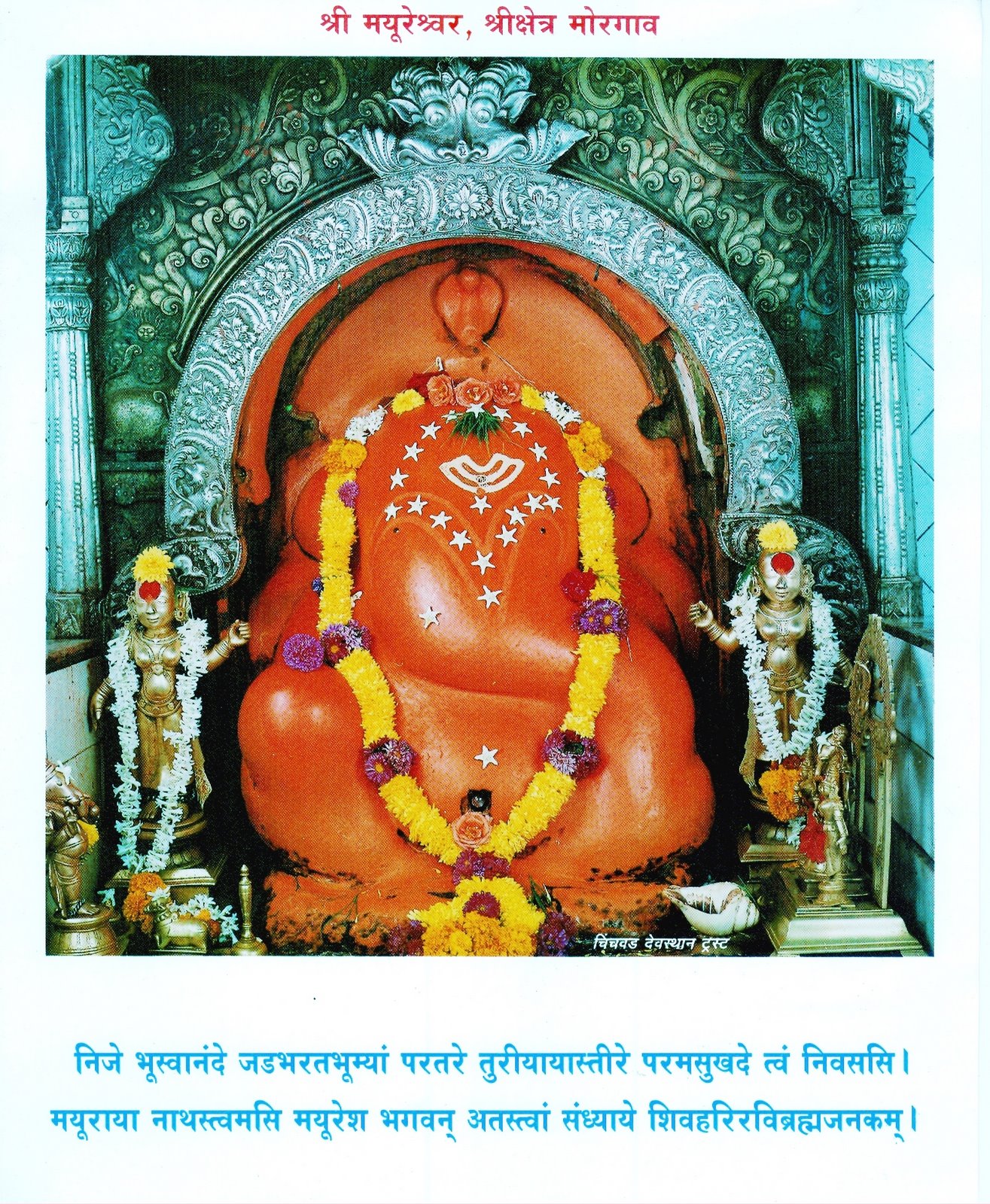
1. Ganesha Temple, Morgaon
One of the stories about this temple tells of a time when Brahma, Vishnu, Shiva, Parvati and the Sun meditated at this site wanting to know the secrets of the unvierse. Ganesha emerged in the form of a flame and gave them the desired knowledge.
Another time Brahma came to this site to worship Ganesha carrying water in a pot so he could perform abishekam. As he walked into the temple, Brahma tripped and fell, spilling the water. When Brahma tried to mop it up, he was unable to and the water turned into the Karha River which still flows at this site.
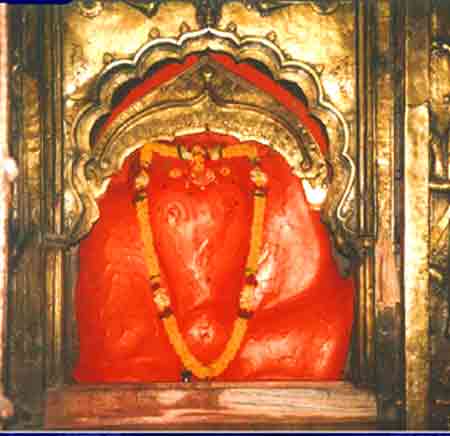
2. Siddhivinayak Temple, Siddhatek
This temple feature a unique form of Ganesha in which his trunk curls to the right instead of the usual left. This form of Ganesha is called Siddhi Vinayaka, the giver of siddhi which means success and perfection in addition to supernatural powers. However, this form of Ganesha, while powerful, is difficult to please.
The Mudgala Purana tells the story of creation. At the beginning, the creator
Brahma emerges from a lotus that rises from Vishnu's navel as he
sleeps. While Brahma starts creating the universe, two demons Madhu and Kaitabha arise from two tiny specs of dirt in Vishnu's ear.
The demons disturb Brahma's process of creation, compelling Vishnu to awaken.
Vishnu battles the demons, but cannot defeat them. He asks the Shiva the
reason for this. Shiva informs Vishnu that he cannot succeed because he had neglected
to invoke Ganesha – the god of beginnings and obstacle removal – before the
fight.
Vishnu performs rituals at Siddhatek, invoking Ganesha with
his mantra – "Om Sri Ganeshaya Namah". Pleased, Ganesha bestows his
blessings and various siddhi powers on Vishnu, who returns to his fight and
slays the demons.
The place where Vishnu acquired siddhis was thereafter known as Siddhatek.
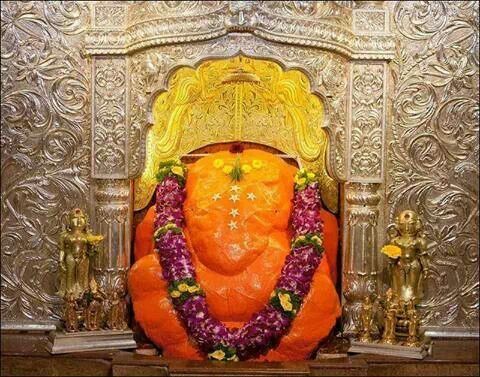
3. Mahaganapati (Ranjangaon)
A demon by the name of Tripurasura obtained a boon that he would be so powerful that no one other than Lord Shiva could kill him. Tripurasur soon defeated all the gods who had to hide in the Himalayas.
Tripurasura went and sat on Indra's throne and and demanded that Shiva turn over his own home at Mount Kailash. Shiva did as requested because he had no choice. Later on, Shiva came to see Tripurasura in the form of a Brahmin and said that he had
come to show Tirpurasura the sixty-four traditional arts.
Tripurasura was excited and said that if he liked the art, he would grant the Brahmin any wish. The Brahmin made three devices that would enable Tirpurasura to fly through the sky. He told Tripurasura that he could go anywhere with the planes, but if Shiva shoots an arrow at you, you will die.
Later a
fierce battle took place between Tripurasura and Shiva. Shiva killed Tripurasura with an arrow. This site is where Shiva performed puja for
Ganesha at the beginning of the battle.
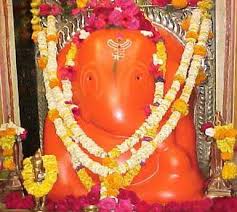
4. Chintamani Temple, Theur
Once a prince named Gana and his army arrived at the hermitage of the sage Kapila who owned a wish-granting jewel called Chintamani. Kapila welcomed the prince and served him and his army with delicious food created with the help of the jewel.
The prince asked to be given the jewel, however the sage refused. Implusively,
Gana takes it anyway. Rishi Kapila prays to Ganesha to help hiim retrieve the gem. That night, Ganesha with his army appears in Gana's dream and one of his soldiers cuts off Gana's head.
Gana wakes up in a rage and marches towards Kapila's hermitage with his army, intending to slay the sage. Gana starts to destroy the hermitage but Ganesha's wife, the goddess Siddhi appears and creates a thousand-armed warrior named Laksha who destroys Gana's army while Ganesha himself beheads the arrogant prince, this time for real.
Ganesha returns the jewel to Kapila, however, the sage says he doesn't want it but would rather have Ganesha stay with him in the hermitage. Ganesha stays in Theur with Kapila, taking the name of the jewel Chintamani.
In another story, we learn that the name Theur originates from the Sanskrit word sthavar meaning stable or steady. Brahma meditated here because his mind was restless and unsteady. After some time, Brahma's mind became sthavar thanks to Ganesha's blessings. Since Ganesha got rid of Brahma's chintas ("worries"), he became known as Chintamani.
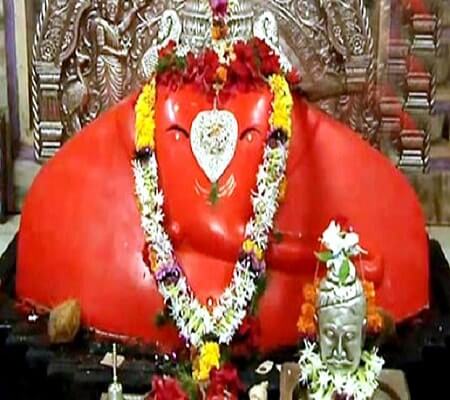
5. Ballaleshwar, Pali
In the long distant past, there was a wealthy merchant named Kalyan. They had a son named Ballal who was very religious. One day Balal and his friends we playing in the countryside and made a place to perform puja to Ganesha who was in the form of a large stone. The children became so absorbed in what they were doing that they were very late returning to home, much to the irritation of their parents who complained to Balal's parents. Kalyan went looking for them and became more and more furious and was in a complete rage when he found the children.
Kalyan yelled at the children to go home and stomped on all the little temples they had constructed. Kalyan found his own son deep in meditation and started to beat him in punishment. He lifted the stone that Balal had worshipped as Ganesha saying, "Now we'll see if your god can protect you." and he threw it onto the ground where it broke into many pieces. He left his son and returned home.
Ganesha, moved by the child's devotion, appeared in the form of a wandering sadhu before Ballal. Upon seeing Ganesha, Ballal's thirst and hunger vanished; his
wounds were healed and Ganesha told Ballal he would bless him with whatever he asked for.
Ballal asked Ganesha to always remain and bless those who honored him at that spot. Ganesha agreed and said that he would take Balal's name before hos own so he will be known as Ballaleshwar (Ballal's Lord). He embraced Ballal and vanished into the nearby stone. The stone's cracks disappeared and was made whole again.
That stone statue is called Ballaleshwar. The stone idol which Kalyan threw to
the ground is known as Dhundi Vinayaka. This is a self revealed murti and is
worshiped before Ballaleshwar is worshiped.
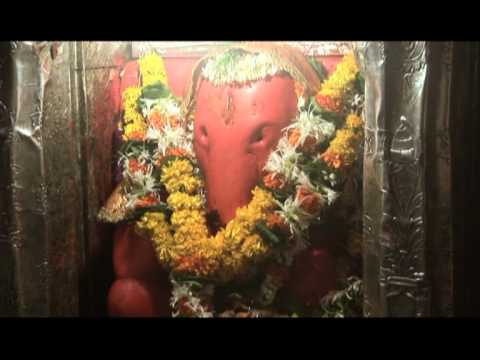
6. Varada Vinayak
There once was a King who had no children. They went to the forest hermitage of the Rishi Vishwamitra. The sage gave the King a mantra which, after some practice, helped the King and his wife to have a child whom they named Rukmaganda.
When the Prince Rukmaganda was a young man, he was traveling through the forest and stopped at the ashram of Rishi Vachaknavi. The Rishi's wife, Mukunda, fell in love at the sight of the handsome prince and tried to seduce him. The prince flatly refused and left the ashram immediately.
Mukunda became very lovesick. Knowing her plight, Indra, the King of the gods, took the form of Rukmaganda and made love to her. Mukunda became pregnant and gave birth to a son Gritsamada.
When he was a young man, Gritsamada learned of some circumstances surrounding his birth and in a rage, cursed his mother to become the thorny plant called Bhor.His mother
Mukunda cursed Gritsamada that a cruel rakshas (demon) will be born
to him.
Suddenly they both heard a heavenly voice saying, "Gritsamada is the son of Indra", leaving them both shocked, but too late to alter their respective curses. Mukunda was transformed into the Bhor plant. Gritsamada, ashamed and penitent, retreated to the Pushpak forest where he prayed to Ganesha for a reprieve.
Ganesha was pleased by Gritsamada's sincerity and penance. He offered him a blessing that he would bear a son who could not be defeated by anybody other than Shiva.
Gritsamada asked Ganesh to bless the forest so that any devotees who pray in that place will be successful. Ganesha agreed to stay there permanently. Gritsamada built a temple there and the Ganesha installed there is called Varada Vinayaka. Today the forest is known as Bhadraka.
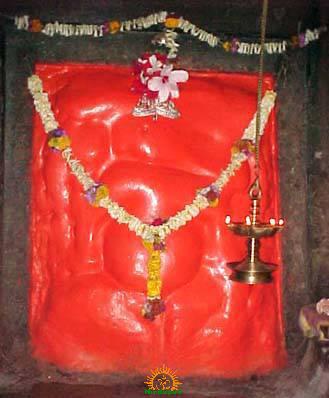
7. Girijatmaj Temple-Lenyadri
Once Parvati (Girija) asked her husband Shiva who he was meditating on. He said he was meditating on "the supporter of the entire universe" - Ganesha, and he
initiated Parvati with the Ganesha Mantra "Gam".
Desiring to have a son, Parvati spent time meditating on Ganesha for twelve years at
Lenyadri. Pleased by her effort, Ganesha blessed her and agreed that he would be born as her son. His special purpose was to kill a demon named Sindhu
Thus, Ganesha was born to Parvati at Lenyadri. Later, Shiva gave Ganesha a boon that whosoever remembers him before starting a job, will successfully complete that task.
For 15 years Ganesha grew up at Lenyadri. The demon Sindhu knew that his death would be at the hands of Ganesha, sent multiple
demons; Krur, Balasur, Vyomasur, Kshemma, Kushal, and many more, to kill Ganesha, but all of them were instead killed by him.
When he was only six years old, Ganesha received multiple items from Vishwakarma, the architect of the universe. He endowed Ganesha with the weapons Pasha (noose), Parashu (axe), Ankusha (hook) and Padma (Lotus).
Once, little Ganesha knocked an egg from a mango tree, from which emerged a
peacock. Ganesha mounted the peacock and assumed the name Mayuresvara.
Mayuresvara later killed Sindhu and his army-generals at Morgaon, the most
important of the Ashtavinayaka temples.
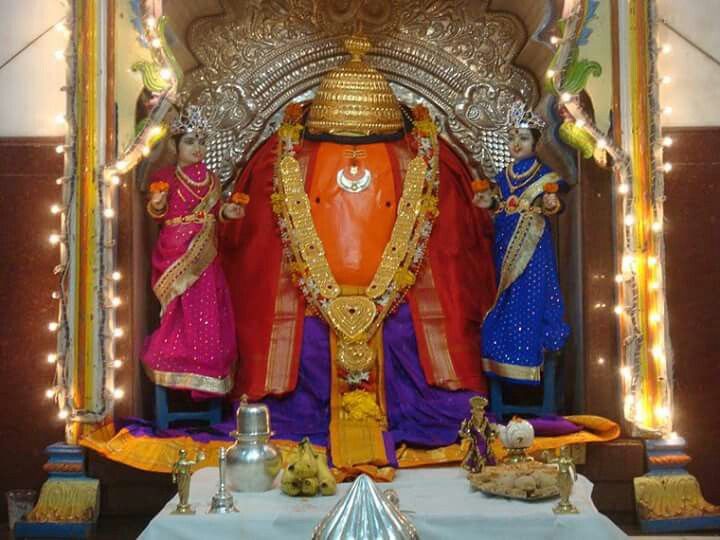
8. Vigneshwara Temple, Ozar
A long time ago,
King Abhinandana performed a yagya in which he did not give an offering to the King of the Gods, Indra. The infuriated Indra ordered Kala (Time/Death) to
destroy the sacrifice. Kala took the form of the demon Vignasura (obstacle demon)
who created obstacles in the sacrifice and ruined it. But he couldn't stop and continued to create havoc in the universe, creating obstacles to the good deeds and sacrifices of sages and other beings.
The rishis asked Brahma and Shiva for help, both of whom advised that they worship Ganesha. Responding to
the prayer of the ascetics, Ganesha began to battle the demon, who soon realized that it was impossible to win and surrendered to his opponent and
agreed not to harass the beings of the world.
It was agreed that Vigna (obstacles) would dwell only in places where Ganesha was not invoked or worshipped. In some versions of the story the remorseful Vigna was made an attendant of Ganesha, who would trouble those who fail to worship Ganesha.
Vignasura
requested Ganesha to take the name Vigneshwara (The Lord of
Vigna/obstacles) to commemorate the event. The relieved sages consecrated an
image of Ganesha as Vigneshwara at Ozar to mark the event |

